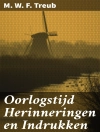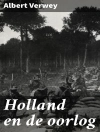From Sicily to Elizabeth Street analyzes the relationship of environment to social behavior. It revises our understanding of the Italian-American family and challenges existing notions of the Italian immigrant experience by comparing everyday family and social life in the agrotowns of Sicily to life in a tenement neighborhood on New York’s Lower East Side at the turn of the century.
Moving historical understanding beyond such labels as ‘uprooted’ and ‘huddled masses, ‘ the book depicts the immigrant experience from the perspective of the immigrants themselves. It begins with a uniquely detailed description of the Sicilian backgrounds and moves on to recreate Elizabeth Street in lower Manhattan, a neighborhood inhabited by some 8, 200 Italians.
The author shows how the tightly knit conjugal family became less important in New York than in Sicily, while a wider association of kin groups became crucial to community life. Immigrants, who were mostly young people, began to rely more on their related peers for jobs and social activities and less on parents who remained behind.
Interpreting their lives in America, immigrants abandoned some Sicilian ideals, while other customs, though Sicilian in origin, assumed new and distinctive forms as this first generation initiated the process of becoming Italian-American.
Содержание
Figures
Maps
Tables
Acknowledgments
Introduction
Environment and Behavior
From Agrotown to Tenement
Chapter One: Sicilian Social Ideals in the Nineteenth Century
Family and Familism
Occupation and Social Class
The Social Origins of Conflicting Ideals
Chapter Two: Residential Choice in the Sicilian Agrotown
The Physical Setting
Choosing a House
Occupation, Class and Kin
House and Household
Residential Mobility
Summary
Chapter Three: Everyday Life and Sicilian Society
A Typical Day
Activity, Time and Location
Agrotown Social Patterns
Summary
Chapter Four: Sicilian Migrants
Familism and Migration
The Social Organization of Migration
Class and Immigrant Occupations
Chapter Five: Tenement Residential Patterns
Tenements
New Restraints
New Opportunities
New Restraint or New Ideal? The Malleable Household and the Kitchen Salotto
Environmental Change and Residential Patterns in New York
Chapter Six: Everyday Life in New York
A Typical Day
Activity, Time and Location
Environmental Change and Everyday Life
Chapter Seven: Immigrant Society and Culture
The Nuclear Family and American Individualism
A Family Social Cycle
The Question of Class
Social and Cultural Change
Appendix A: Social Ideals in Sicilian Proverbs
Appendix B: A Note on Sources and Methods
Notes
Bibliography
Sicily and Migration
Immigrant Italians
Environment and Behavior
Index
Об авторе
Donna R. Gabaccia is Assistant Professor of History and Political Science at Mercy College, Dobbs Ferry, New York.












